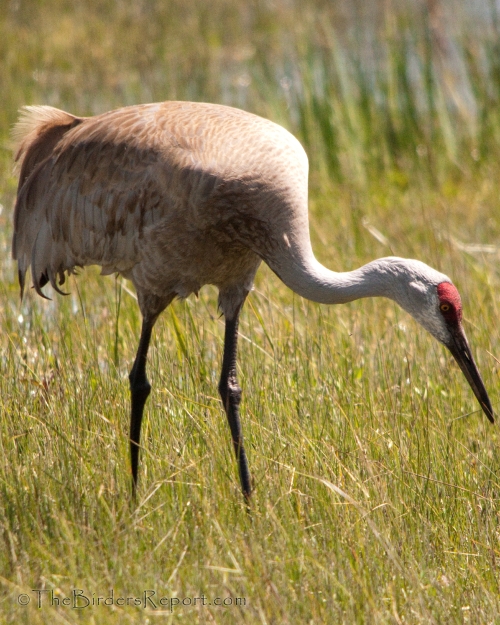Sandhill Crane (Grus canadensis) photo by Larry Jordan
Sandhill Cranes (Grus canadensis) were once common throughout the west and especially in the California Central Valley. However their populations declined drastically as a result of unregulated hunting and habitat loss during settlement of the region.
In California, the breeding population was reduced to fewer than five pairs by the 1940s. Fortunately, all populations of Sandhill Cranes have increased, and in 2000 an estimated 465 pairs were breeding in California. Nonetheless, much of their historic range remains vacant and the population remains far below historic numbers1.
The Burrowing Owl came in second 🙁 It’s OK. I love Sandhill Cranes, they are so prehistoric! Maybe next year the Burrowing Owl will make it to the top? Read the full story here.
Reference: 1Audubon California










Comments on this entry are closed.
BEAUTIFUL image Larry!! We used to see a lot of these when we lived in Colorado, not so here in the Coastal Area of Texas.
Oh, and I’m sure glad I have ‘brainy’ blogging friends to guide me in identifying birds!!! I do believe you’re right about the osprey vs. the falcon on my last post!!! It IS a peregrine falcon. I compared both, and by golly…you are correct. Thank you so much. I’m gonna go change that to be more accurate. I can’t thank you enough. I’m one who loves learning.
I have seen Sandhill Cranes a couple of times but, sadly, not in California. Saw a pair in Utah and a pair in Yellowstone. I voted for the Burrowing Owl but it’s hard to be disappointed when a Sandhill Crane wins! I’ve never seen a Burrowing Owl though. someday!
really cool. near where i was raised in wisconsin, there was a sandhill crane sanctuary. have not seen any here in texas, although i know they pass over.
The cranes are such an amazing bird,thank you for the info on them,have a great weekend!phyllis
Hey Larry I’m sorry your Burrowing Owl couldn’t quite make Number One, but you have to admit it got beat by a good one. We don’t have the crane family here (apart from a few heavily protected pairs of Common Crane in SE England) so I never get to see any. Good then to watch the video and see the Sandhills in quiet, composed, and unhurried action like that.